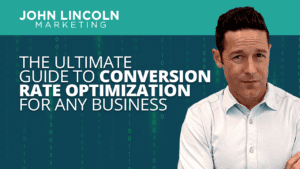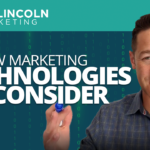
Top 16 Questions to Ask a PPC Company in 2024
In 2024, choosing the right PPC company is not just about spending your advertising budget. You want to make every cent count towards your business
One of the best ways to generate buzz about your brand is to create content that goes viral. But how do you make that happen?Fortunately, you can create viral content by following a prescribed set of best practices. The formula is part art, part science, and a whole lot of promotion.
In this guide, I’ll cover the secret to going viral.
The first question to answer is: how many people need to share your content before it’s considered “viral”?
It depends.
If you’re in a small industry, even just a few hundred shares can make a huge impact.
Our Ignite Visibility blog posts tend to get 50-200 shares on average. Viral articles get 10x or 20x more shares than that.
So we’d consider a post viral if it got about 1,500 shares. That’s perfectly fine for us because we’re a B2B digital marketing company with a relatively small audience.
If we were running a fashion blog, though, we’d probably need tens of thousands of shares before we classified an article as viral.
And if we were running a site like Buzzfeed, we’d need to see hundreds of thousands of shares.
Next, let’s look at how to increase your chance of going viral. This formula explains virality:
(Virality Level) x (Number of People Who See the Content) = Number of Shares
As you can see, there are two components to the product on the left side of the equation:
So right off the bat, you have two options when it comes to increasing your chances of going viral. You can generate content with a high virality level or you can increase the number of people who see the content.
In either case, you’re increasing your chances of going viral.
I’ll use the next few sections to cover triggers that help content catch on.
Want to attract some eyes to your content? Trigger an emotional response.
To do that, though, you must first understand your audience.
How can you do that? Find out what kinds of content they’re already sharing.
Chances are pretty good that if they’re sharing the same kind of content over and over again, they’ll likely share that type of content if you post it on your blog.
According to BuzzSumo, long-form content gets more shares.
Why? Probably because people appreciate exhaustive, detailed information.
Long-form content is usually somewhere between 3,000 and 10,000 words in length. That might seem like a lot of writing, but it’s a small price to pay if the article spreads like wildfire all over cyberspace.
Pro-tip: make sure you break up your long-form content with subheaders. When you do that, you make your content scannable, so visitors pressed for time can go straight to the part of the article that contains the info they’re looking for.

Images within articles are like windows. They shed some light on the subject and let in a little fresh air.
If you put nothing but text in your content, you risk putting your audience to sleep. Add some images that illustrate the points you’re trying to make.
You can even use images to put some humor into your content. It’s easy to do that by sprinkling reaction GIFs throughout the article.
Research has found a link between viral content and the VAD model of emotion.
If you’re unfamiliar with the VAD model, here’s the breakdown:
People who’ve studied the science behind viral content found that articles with high-arousal or low-dominance emotions tended to generate the most comments.
However, people are more likely to share content on social media when it generates high-dominance emotions.

Specifically, here’s the type of content that really resonates:
At some point, you’re going to limit your reach if you try to promote content alone. That’s why you need to enlist the aid of influencers.
Find people online with an audience similar to the audience that you’re trying to reach. Then, reach out to those folks and ask for a share.
Here are a few pointers about how you can do that.
First, identify the right influencers. A tool like BuzzSumo or FollowerWonk will help with that.
Next, study the people who influence you. Take a look at their digital strategies. Get some inspiration. Go and do likewise.
Then, engage with key influencers. If they post something that you think will be valuable to your audience, share it on social media.
Keep in mind: when you share their content, you should tag them. That’s how they’ll know that you’re someone who’s serious about building business relationships online.
Nurture those relationships. Be sure to keep sharing their content as they share yours.
Now that you know the secret to going viral, it’s time to develop a plan. After all, what good is all this knowledge without an action plan?
Sit down with your team and brainstorm up a content strategy that you think will resonate with your audience. Then, identify the best ways to promote your articles.

Welcome to John Lincoln’s personal website. You can learn about John Lincoln’s books, films, book him to speak and contact him. John is directly associated with many of the businesses mentioned on this website and freely discloses this information.

John Lincoln is CEO of Ignite Visibility, one of the top digital marketing agencies in the nation. Ignite Visibility is a 6x Inc. 5,000 company. Ignite Visibility offers a unique digital marketing program tied directly to ROI with a focus on using SEO, social media, paid media, CRO, email and PR to achieve results. Outside of Ignite Visibility, Lincoln is a frequent speaker and author of the books Advolution, Digital Influencer and The Forecaster Method. Lincoln is consistently named one of the top digital marketers in the industry and was the recipient of the coveted Search Engine Land “Search Marketer of The Year” award. Lincoln has taught digital marketing and Web Analytics at the University of California San Diego since 2010, has been named as one of San Diego’s most admired CEO’s and a top business leader under 40. Lincoln has also made “SEO: The Movie” and “Social Media Marketing: The Movie.” His business mission is to help others through digital marketing.
Want to get in touch with John Lincoln? Click Here To Reach Out.

In 2024, choosing the right PPC company is not just about spending your advertising budget. You want to make every cent count towards your business

Whether you’re a seasoned marketer or just starting out, conversion rate optimization (CRO) is a powerful tool that can boost your sales, leads, and overall

Feeling overwhelmed by the sea of SEO companies out there? You’re not alone! Choosing the right partner is crucial for achieving your online marketing
 10 New Marketing Technologies to Consider for Your Tech Stack
10 New Marketing Technologies to Consider for Your Tech Stack It’s a new year. That means it’s a good time to evaluate some new technologies. If your current tech stack is